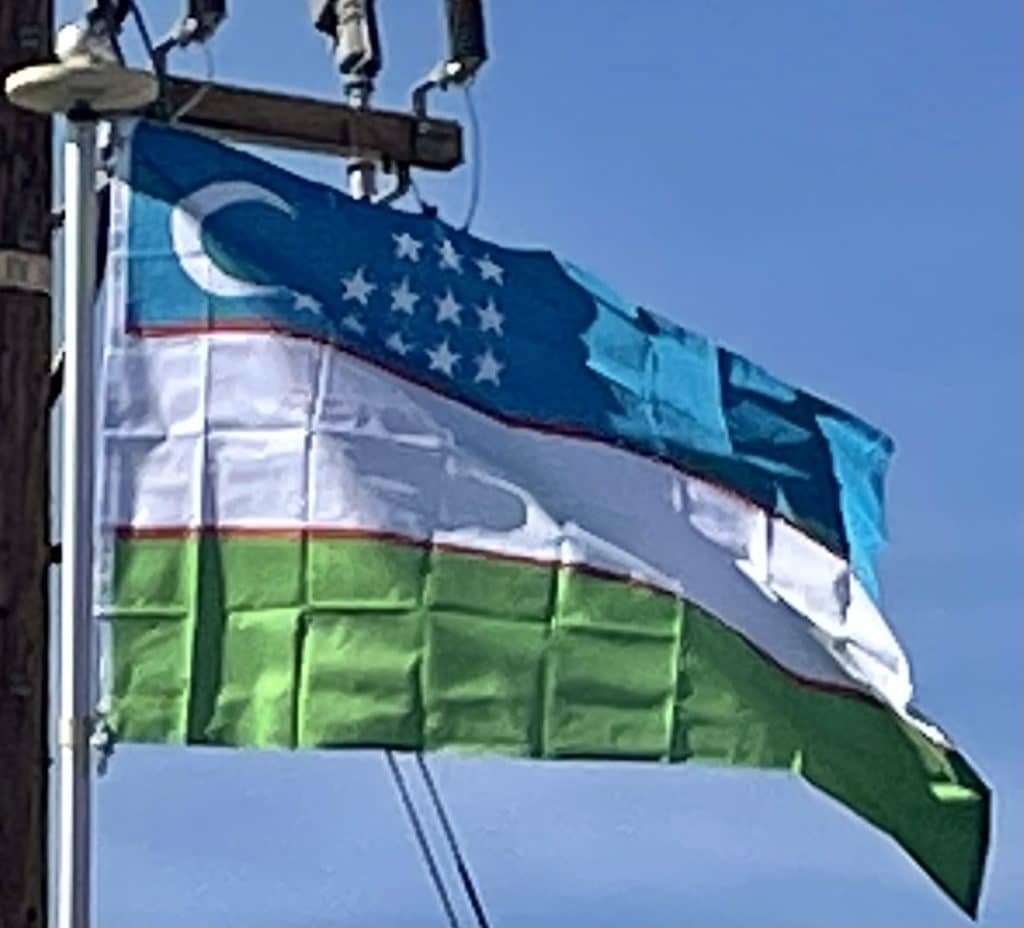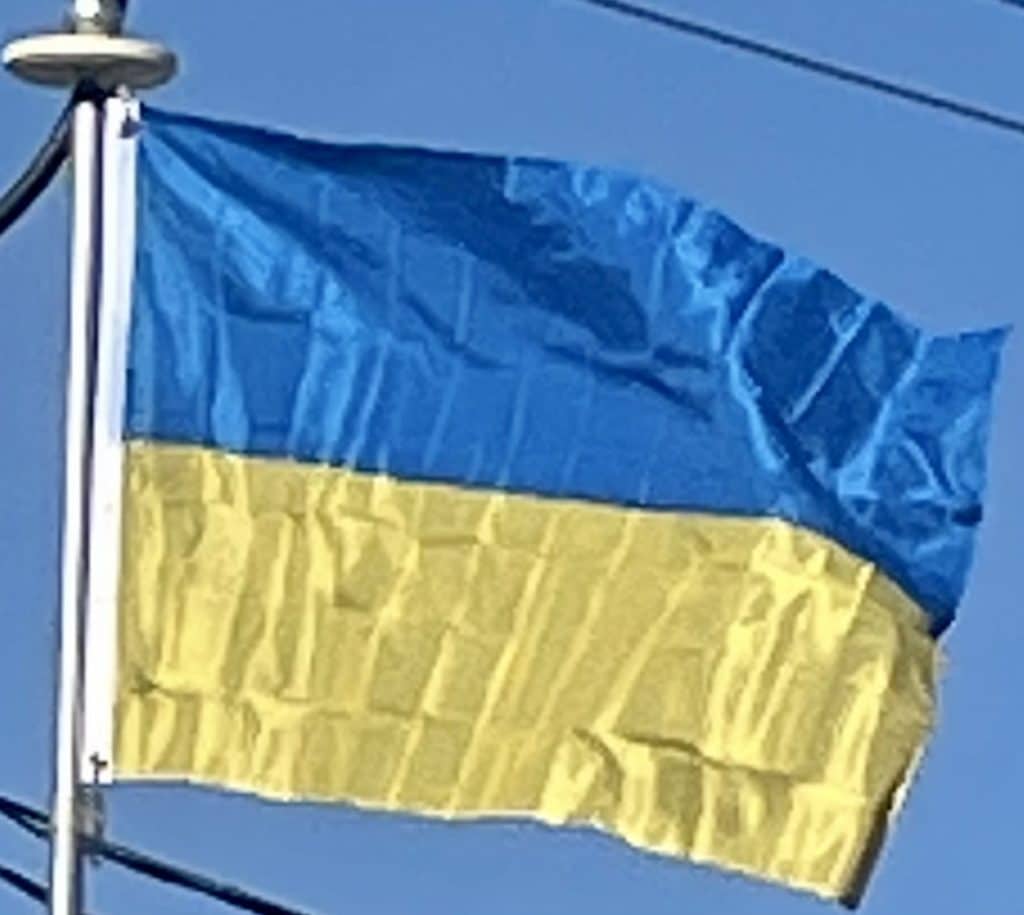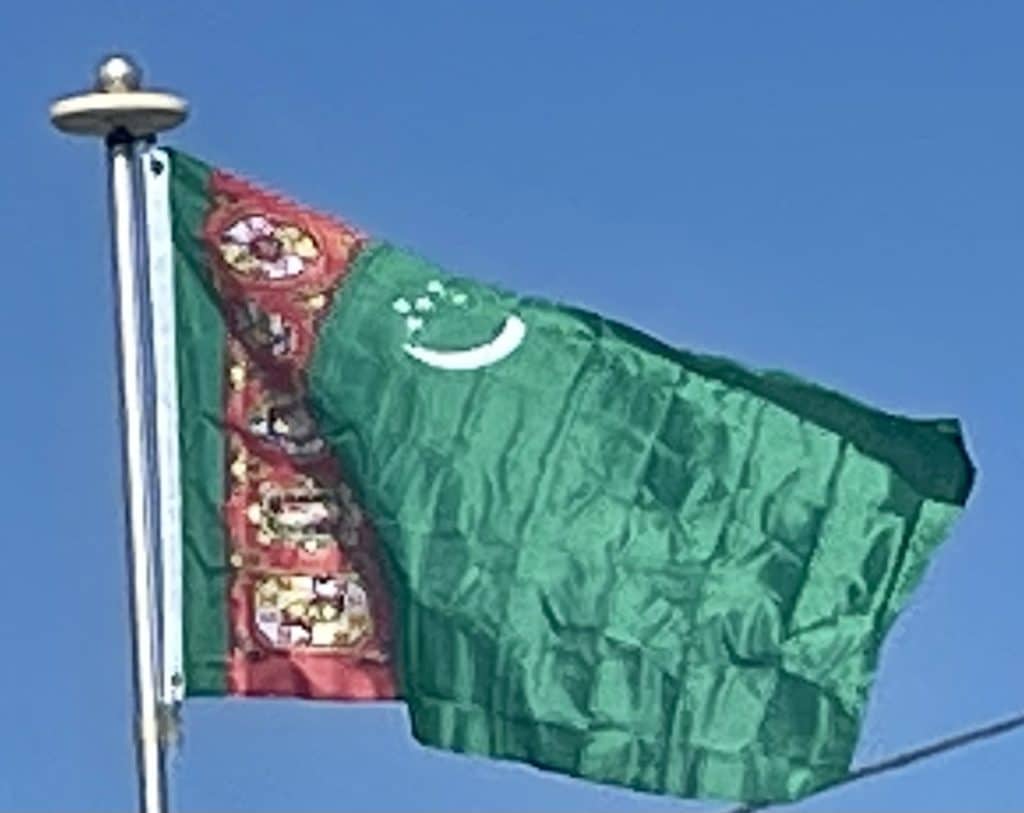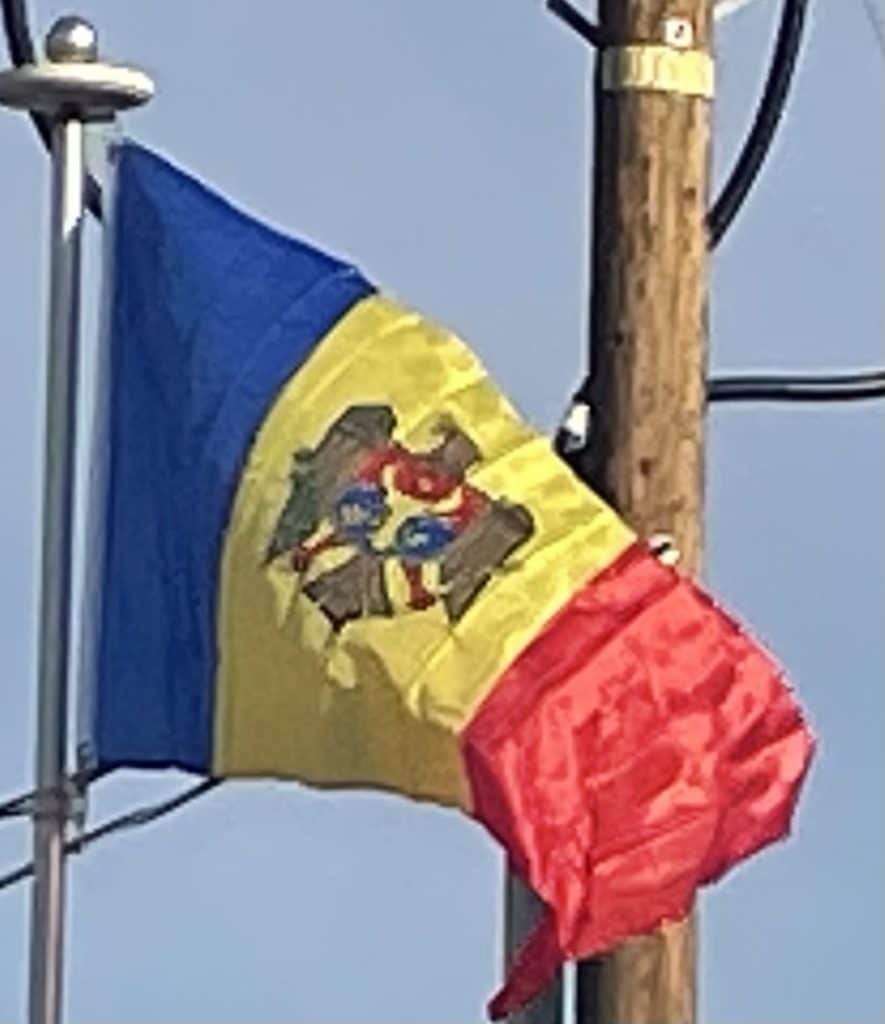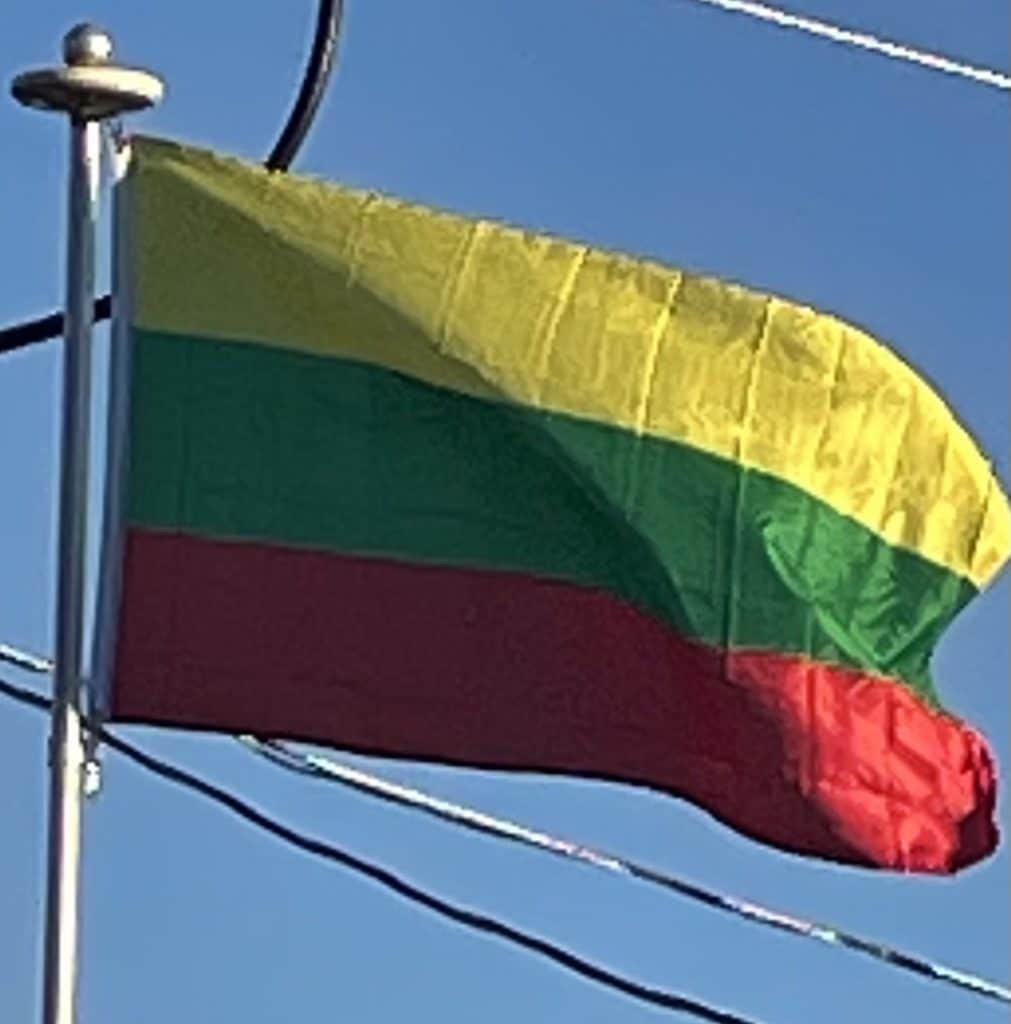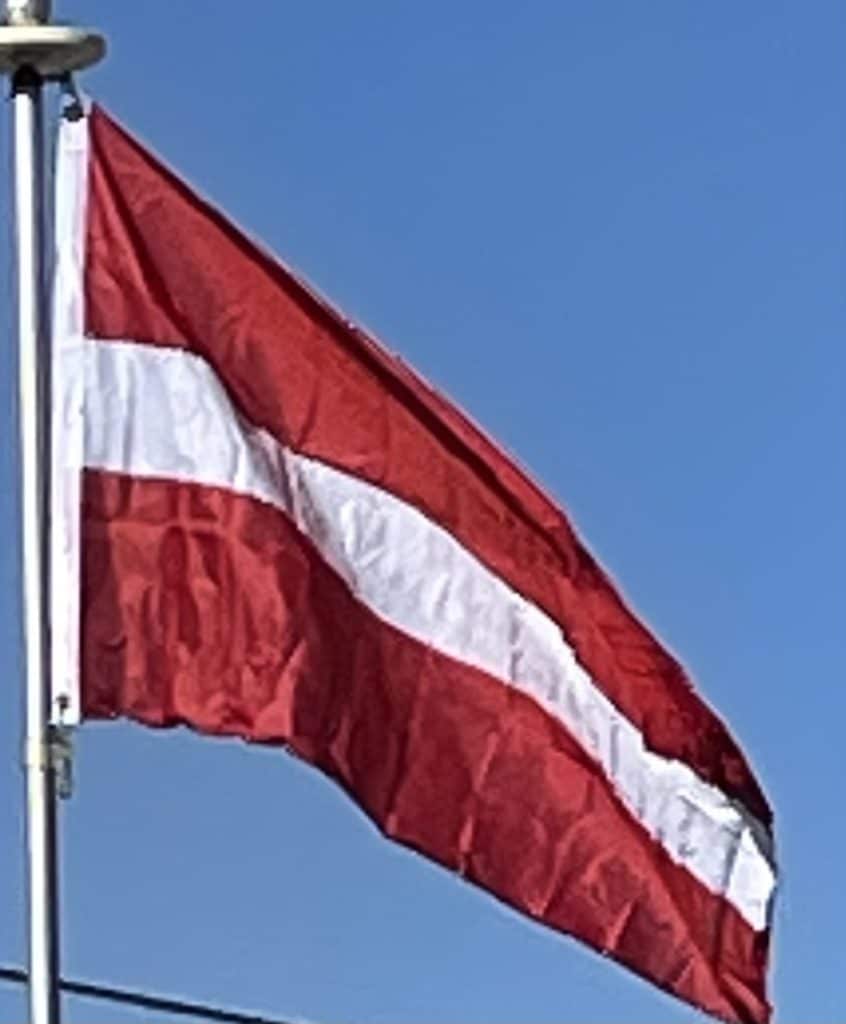Uzbekistan
The flag of Uzbekistan consists of three horizontal azure, white and green bands separated by two thin red fimbriations, with a crescent moon and twelve stars at the canton. Adopted in 1991 to replace the flag of the Uzbek Soviet Socialist Republic (SSR), it has been the flag of the Republic of Uzbekistan since the country gained independence in that same year. The design of the present flag was partly inspired by the former one.
